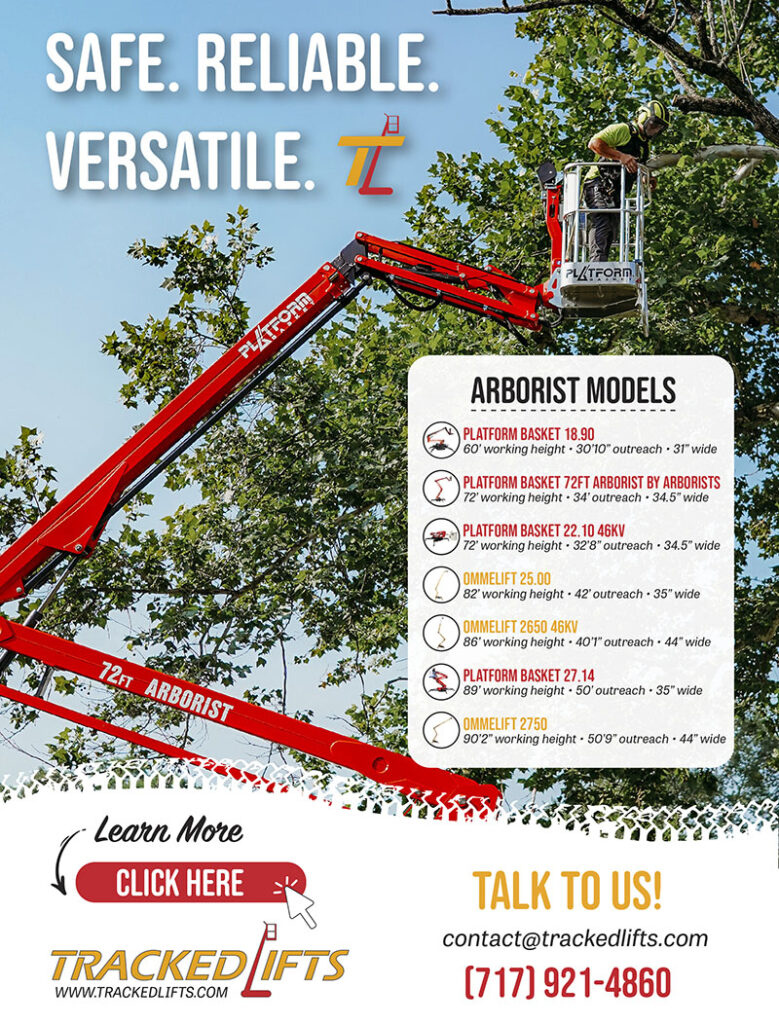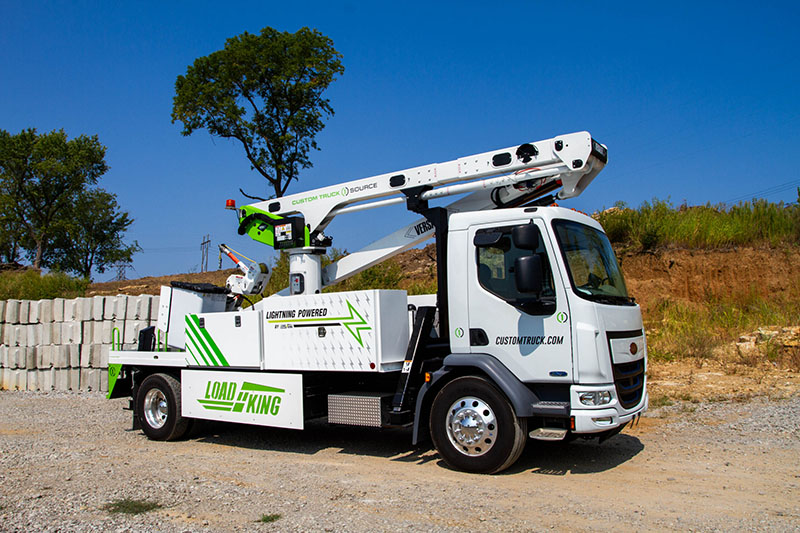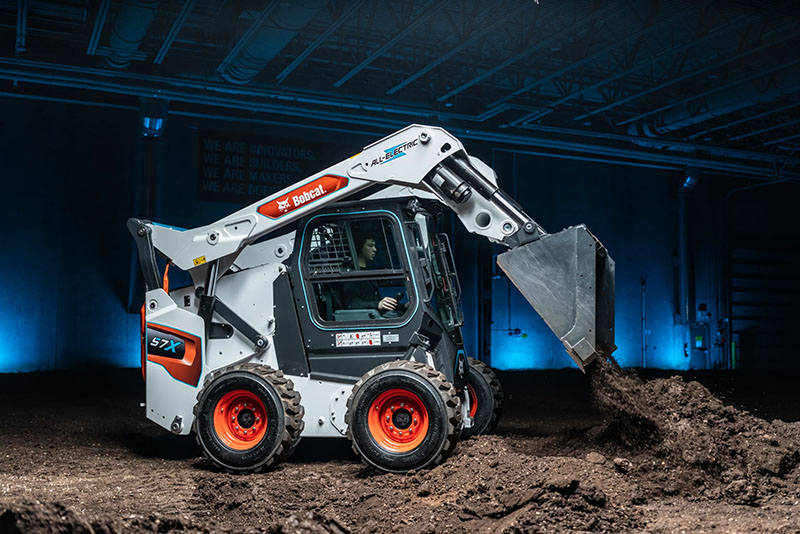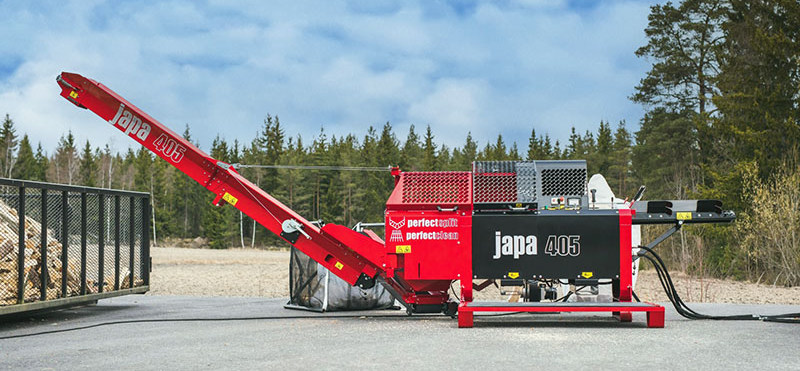The State of Electric
As tree care rapidly electrifies, practical considerations about heavy equipment give buyers pause
There are numerous benefits to going electric, but performance challenges, a lack of infrastructure, and higher upfront costs may prevent the industry from fully converting
Este es nuestro intento de convertir las historias en audio español usando Inteligencia Artificial. Aún así le recomendamos que reconfirme ciertas palabras clave y temas. ArborTIMES no garantiza ni se responsabiliza de la conversión del inglés al español de los relatos.

As equipment and vehicles across all industries — from sedans to 13-ton trucks — go electric, the contours of a coming transformation in the tree care industry are taking shape.
Many arborists have already enthusiastically adopted electric versions of tools such as chainsaws. And electric versions of larger equipment are rapidly coming to the market.
Electric equipment holds many benefits for tree care professionals, but there are also challenges that may prompt some to wait until this segment of the market has further matured.

Moving Toward Electric
The arborist and forestry industries are benefiting from the advancement of electric equipment in the construction industry, which has been progressing rapidly since Volvo Construction Equipment and JCB began releasing such offerings in 2019.

In Europe, the ZE85, an eight-ton class battery-operated excavator released by Hitachi Construction Machinery in 2020, was used in a pilot project for zero-emissions construction sites in Oslo. Further developments continued apace, and soon thereafter, more equipment with compatible use in the tree care industry started going electric, too.
In 2020, Toro introduced the first battery-powered compact skid steer, the eDingo 500, and in 2022 brought out the Ultra Buggy e2500, a battery-powered material handler. Both machines can run for eight hours straight with zero emissions.
In 2022, Bobcat released the first all-electric compact track loader, the T7X, followed by the first all-electric full-sized skid-steer loader, the S7X, in 2023.
While electric power take-off (ePTO) technology for bucket trucks has been around for decades, its use for tree care was limited by the hydraulic demands of tree care work.
In construction, a bucket can be raised to a given height and remain there for an extended period of time with the truck engine off. Arborists, on the other hand, need to continuously move their buckets during work. The truck’s engine must remain running to power this movement, resulting in heavy diesel use and continuous noise.
In September 2023, Custom Truck One Source unveiled its Lightning PTO, an ePTO that allows a truck to use battery power instead of the diesel motor to run. The system includes batteries and cooling capabilities that allow the truck and bucket to run 80% on electric and 20% on diesel, with the electric engine recharging via the short-term use of the diesel engine.

This allows crews to use the e-PTO out in the field for as long as necessary without ever having to return to a home base to recharge it. If for any reason the truck’s battery goes dead, such as in very cold weather, the crew can continue work by running the PTO off the diesel engine.
Benefits of Electric
There are many reasons for arborists to go electric, from reduced emissions and noise to less maintenance and spending on fuel.

Cleaner and Greener
The ability to reduce emissions is a major benefit of using electric equipment. Not only can it reduce your operation’s environmental footprint, but it can create more flexibility in where you can use the machines. Notably, plug-in and battery-powered electric machines can be safely used indoors.
“There’s reduced pollution,” says Ryan Taylor, marketing coordinator for Metsa Machines, which sells three-phase electric Japa firewood processors. “You can run it in more enclosed areas. There’s a lot of positives that come along with being able to use three-phase electric.”

Quieter and Safer
Electric equipment is far quieter than traditional diesel and gasoline engines, which provides arborists numerous benefits. One is less disturbance to both workers and local residents, whether they are human or wildlife.
“I’ve worked on a farm before with peacocks and ducks, and because we’re so quiet, I have had peacocks flying into a tree while I’m in it, just hanging out,” says Samuel Martinez III, a certified arborist and entrepreneur who owns tree care company Golden Tree and plant health care companies Indy Ash and Colorado Ash. “I’ve also been moving the eDingo, hauling to the chipper, and the peacocks are walking right behind us like we’re not even there because we’re quiet.”
Another benefit of reduced noise is greater job-site safety, as ground-to-bucket communication is much easier and clearer, preventing miscommunication.
Easier to Maintain
Electric machines reduce arborists’ maintenance requirements, as the engines have fewer moving parts. The main maintenance requirements are charging batteries and changing hydraulic fluid and filters.
“As a small company, I want as little maintenance as possible,” says Martinez. “There are too many trucks, too many small engines, chainsaws. Each and every one of them is a link in the chain that can break.”
Easier on Bodies

Martinez’s decision to switch to electric was motivated by the increasing wear and tear on his body from the long-term use of gas-powered chainsaws. The repetitive pull-start motion and intense vibrations were clearly going to put a limit on how long he could continue doing his job.
“They say tree climbers have a shelf life of five years,” he says. “I had a boss tell me that, and I didn’t understand it until I got the injuries. What if we could get this product to climbers before they break?”
Additionally, the quiet of electric machines of all sizes allows workers to enjoy better well-being by avoiding constant exposure to loud noise.
“In an electric truck, the comment we hear from drivers is, ‘This is the first time in years that I’ve gotten out of the truck and my ears aren’t ringing,’” says Bryan Bachmann, a product manager for Custom Truck One Source. “The constant hum of the engine isn’t there.”
Long-term Affordability
A major advantage of electric equipment is the substantial reduction in fuel use. Bachmann says that back-of-the-napkin math on introducing an electric ePTO penciled out to more than a million dollars in fuel savings for one representative company.
“If you can eliminate 80 percent of your fuel consumption, that’s a straight hit to the bottom line,” he says.
He notes that running the engine also reduces wear and tear on the machinery, so you can extend the life of the equipment. A truck that is idling 80 percent less may gain years of productive life, thereby stretching replacement costs over a longer horizon.
Tax Credits
The Inflation Reduction Act (IRA,) which became law in August 2022, includes a tax credit for qualified commercial electric vehicles and mobile machinery purchased by the end of 2032. While the tax savings may not be enough to make up for the higher up-front cost of electric equipment, it can add to fuel savings that result in a higher return on investment over the long term. (See sidebar.)
Challenges with Electric
While advances in electric equipment are injecting new energy into the heavy equipment market and hold great promise for tree care professionals, there are a variety of challenges that may give potential buyers pause.
“Being able to use electric is a good thing,” says Taylor. “However, it’s also important to keep in mind that with developments in technology, they have to be feasible for the consumer. Just because it sounds like a good idea or because you want it to be a good idea, you need to make sure that it’s practical and meets the needs of consumers.”
Performance
As electric and battery technology advances, the power and performance of electric tree care equipment is improving, but arborists still find challenges with these options.
Taylor of Metsa Machines says that the main issue with electric equipment is reliability, especially when using portable power units.
“Batteries don’t like the cold,” he says. “In colder temperatures, it is important to be able to recharge and rely on these tools while working.”
Martinez says that aerial lifts powered by lithium-ion batteries intended for arborists are often “painfully slow.”
Lack of Infrastructure
Since tree care work must be done on-site, typically far from three-phase electric, equipment that needs frequent recharging can be a hindrance when charging stations aren’t readily available.
“As you become more mobile with the equipment, your ability to utilize electricity decreases,” says Taylor. “Until there are more efficient ways to store and utilize energy, I believe it will be limited in terms of loaders and other machinery. Having a dedicated power supply is crucial.”
Up-front Cost
Electric versions of tree care equipment are typically more expensive than their diesel-powered counterparts, which can dissuade some potential buyers. However, looking at cost over the life of the equipment can reveal that higher up-front costs may be offset by drastically reduced fuel costs over time.
“Up-front cost is very real,” says Martinez. “I got this eDingo, and it’s worth more than the truck that carries it. That could be viewed as a con, but I don’t have to put gas in the thing, ever. It saves you in the long run.”
What’s Next?
Bachmann likens the state of the electric tree care industry to the automotive universe of 1910. Back then, a drive from Los Angeles to Phoenix in a Model T was full of unknowns, such as whether and where fueling stations might be available. A hundred years later, people do that drive without a second thought because the cars and infrastructure have developed robustly.
“We’re in that part of the infancy of electric vehicles right now,” he says. “There’s charging infrastructure in a lot of the urban metro areas, but once you get 20 or 30 miles outside of those, not so much.”
But, he says, progress is coming — and quickly. Tree care will continue to rapidly electrify: “As battery technology and motors continue to improve, I think you’ll naturally see that segue into tree care applications.”
The Commercial Clean Vehicle Credit
IRC Section 45W created by the 2022 Inflation Reduction Act (IRA) provides a credit for new electric commercial vehicles and mobile machinery purchased before the end of 2032.
Vehicles with a gross vehicle weight rating (GVWR) below 14,000 pounds must have a battery capacity of at least 7 kWh and will qualify for up to $7,500 in tax credits. Vehicles with GVWR over 14,000 pounds must have a battery capacity of at least 15 kWh and will qualify for up to $40,000 in tax credits.
The tax credit amounts to the lesser of either 15% of the business’s basis in the vehicle (or 30% if the vehicle uses no gas or diesel) or the incremental cost of the vehicle. Learn more on the IRS website.



